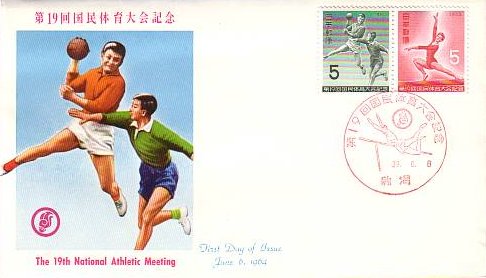
Japan in June
June 1: First day of Ayu season
Ayu are sweetfish and this is a major day for catching them. Fishing for the ayu is strictly controlled to preserve their numbers so the opportunities for catching them are quite limited. The exact starting date for fishing can vary and the length of the season for catching them can also vary depending on the area of Japan one is in.
The oldest poetry written in Japan- the Manyoshu- from the 8th century has some poems about fishing for ayu.
Catching them is an unusual task. In the U.S. we bait our hooks with worms and related critters or put fish flies on them; in Japan in order to catch an ayu you use an ayu. A live ayu has a ring attached to its nose and a hook to its belly. The ring is attached to the fishing line and the fish is cast into the water. Since the fish has a strong territorial instinct another other ayu will attack the first fish, thinking it is invading its territory. The attacker gets caught on the hook and reeled in.
June 4: Cavity Prevention Day
Various activities are held by the Health and Welfare Ministry to get people, especially young children, to take better care of their teeth. This can even include department stores having dentists come in to give free checkups and consultations.
Mid-June: Peiron-Dragon Boat Race
This is a Chinese custom that was adopted by the city of Nagasaki which housed the Chinese trading missions during the Edo Period (1603-1868). The race is similar to those held in Hong Kong, Thailand and Okinawa.
The boats themselves are long, requiring both skill and strength, and there is a strong sense of competition among the participants.
First Sunday of June
Chiyodacho, Hiroshima. The Mibu-no Hana Taue ceremony with special rice-planting songs.
Mid-June: Sanno Festival
This particular shrine goes back to 1478 (consider; this is some 14 years before North American was "discovered" by Columbus!) when it was built to ensure good fortune during the construction of the Edo castle.
This is another time when portable shrines are used. Originally the shrines were moved through the Edo Castle itself and viewed by the shogun. Today it has become a regular parade through Tokyo with hundreds of people taking place.
June 24: Izawanomiya Otaue Matsuri
Izawanomiya Shrine, Isobecho, Mie rice festival with boys 5 to 6 years of age dressing as women and playing a loud drum.
Third Sunday: Father's Day
This is another holiday imported from the United States. It is not as widely adhered to as Mother's Day, though. Gifts are given to fathers and can include such things as belts, wallets and neckties or things the child or children make themselves.
Misc. items
This general period of time is also noted for other activities, although these do not necessarily occur on any specific date.
1. It is the opening of the pool season. Swimming is an important part of the physical education program of schools and 75% of Japanese middle schools have their own pool. (How many schools of any kind in the U.S. do you know with their own swimming pool?).
2. Rice planting: This is roughly the time that rice is being planted with various rituals and celebrations throughout Japan.
3. This is also roughly the start of Japan's rainy season called tsuyu. It is a time of considerable discomfort as temperatures are rising and the humidity is high. There is little sunshine and children get bored being indoors.

|